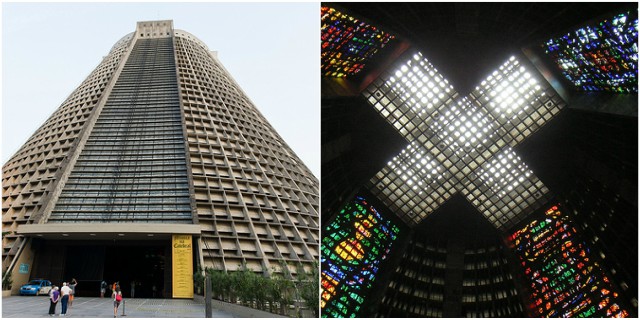Most people in Brazil are Catholics, and Brazil is the country with the largest number of Catholics in the world. Catholics are also the majority in Rio de Janeiro and Saint Sebastian Metropolitan Cathedral of Rio de Janeiro is the main church in the city.
The Cathedral of Rio de Janeiro was built between 1964 and 1979, and is dedicated to Saint Sebastian, the patron saint of Rio de Janeiro.
What is fascinating about the Cathedral of Rio de Janeiro is the fact that it doesn’t look like a typical church at all.
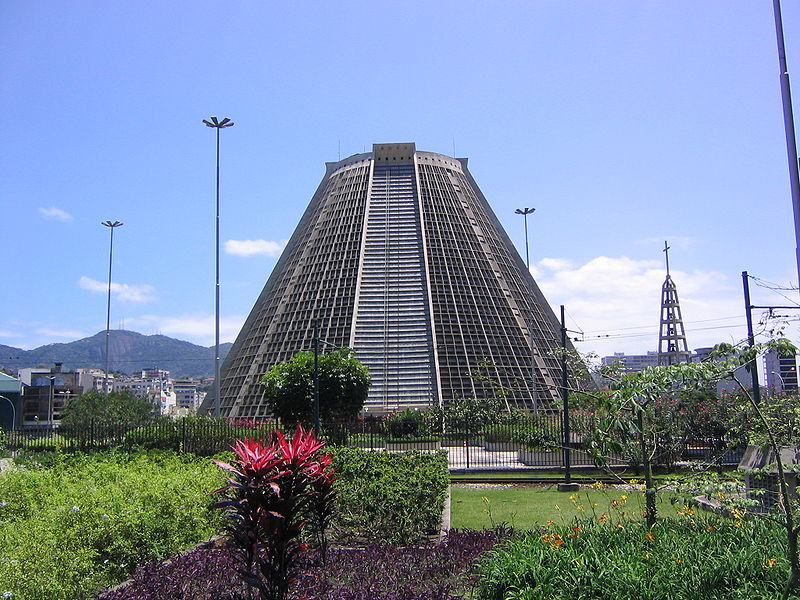
At the beginning of the construction in the 1960s, most of the people of Rio de Janeiro didn’t like how the main church in the city was going to look.
The inspiration of the Metropolitan Cathedral of Rio de Janeiro is in the Mayan pyramids of Mexico and it doesn’t follow the traditional architecture of churches.
The Metropolitan Cathedral of Rio de Janeiro was built from 1964 to 1979. The architect was Edgar Fonseca, a student of Oscar Niemeyer, and the engineers were Newton Sotto Major and Joaquim Correa.
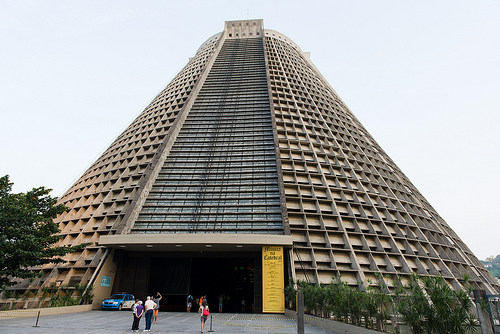
The Cathedral is the most recent replacement of a series of national cathedrals to serve as the seat of the Archdiocese since 1676.
Compared to the previous Cathedrals, The Metropolitan Cathedral of Rio de Janeiro is something new and modern.
It’s located in the center of the city and it’s a building that is impossible to miss. Its external diameter is 106 meters (347 feet) while its internal diameter is 96 meters (314 feet). Its height is 75 meters (246 feet). The inside area is 8,000 square meters (86111 square feet) and its standing room capacity is 20,000 people.
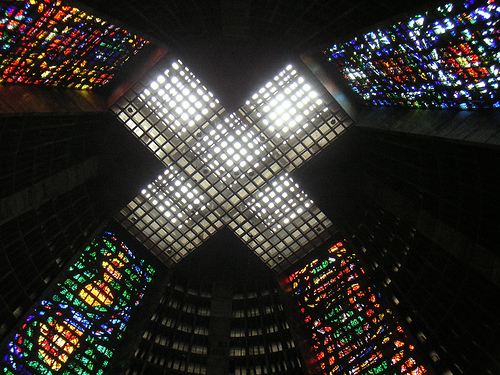
The interior of the cathedral offers much more than the exterior. There is a Greek cross that dominates the ceiling and offers a skylight for the interior.
The four large glass painted windows are another architectural characteristic and the themes in the four windows represents the Church’s Four Marks: Una, Santa, Catholic, and Apostolic. This gives the church a beautiful natural lighting and a mystical atmosphere.
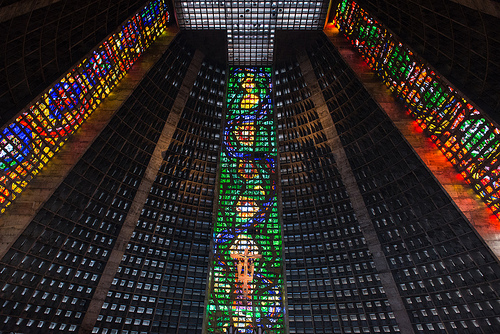
In the basement, the Sacred Art Museum has a collection of sculptures, murals, artwork, and fonts used to baptize the princes of the Portuguese royal family.
Its conical form symbolizes the equidistance and closeness of people in relation to God and the light that spreads from the four arms of the cross represents God descending to Earth.
